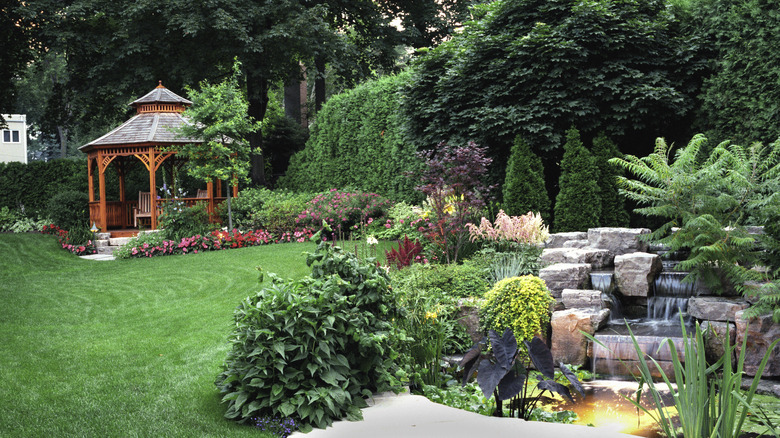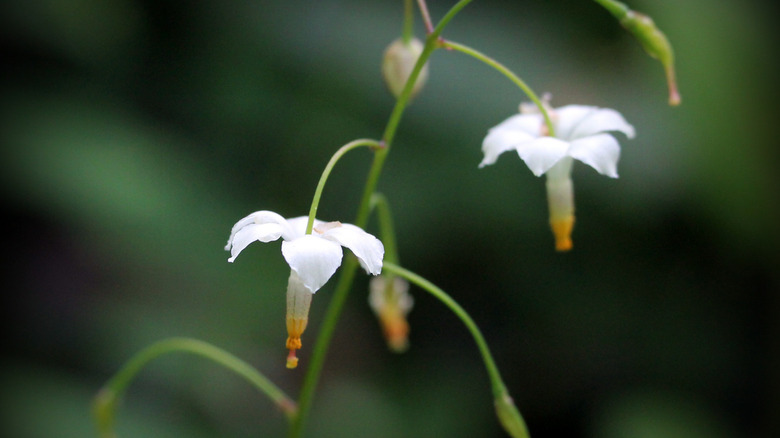The Unique Inside-Out Ground Cover Flower You Should Plant In Shady Areas
Even if you don't have a sun-drenched yard, there's no reason to go without as many flowers as possible. The inside-out flower (Vancouveria), a shade-loving flowering plant, is ready to fill in foliage-less gaps in your outdoor space. Perfect lawns are harmful to the ecosystem, so opt for a ground cover that's beautiful, tasty to pollinators, and requires no mowing!
Vancouveria earned the nickname "inside-out flower", since its stamen juts far enough out from the petals to make it look as if it were turned inside out. Native to the Pacific Northwest, this plant is low-maintenance despite its delicate appearance. Vancouveria has virtually no pests and grows well in both moist and drier conditions. It thrives in USDA zones 5 to 7 and blooms from May to July.
There are evergreen and deciduous species: The white-flowered Vancouveria hexandra is deciduous, while the yellow-flowered Vancouveria chrysantha is evergreen. Although, chrysantha can be more difficult to grow than hexandra, this plant is still an easy-to-grow plant that thrives around tree roots. If you live in the right climate, this flowering ground cover will look enchanting skirting your trees and shrubs.
How to plant and grow inside out flowers
Before committing to this charming plant, make sure it's the right fit for your yard. It won't grow well in extremely hot or dry regions, and it spreads quickly in consistently moist areas. Despite their rainy-region origins, inside out flowers are somewhat drought-tolerant. Drier conditions can slow down their eagerly spreading rhizomes.
Scope out a spot with full or partial shade that offers well-draining, humus-rich soil. Optimal spots for Vancouveria are under trees but also along shaded walkways and rock gardens. Plant your individual Vancouveria plants about 10 to 12 inches apart. Each plant will grow to widths and heights of 1 to 1½ feet.
Other than keeping the soil moist, there's very little work to be done once your plants are established. They tend to grow better if you divide them regularly. If you're choosing deciduous Vancouveria, the only maintenance needed besides division is cleaning up dead leaves and trimming away damaged tissue in the spring. If Vancouveria fits your climate and outdoor space, it makes a stunning lawn alternative for your shady yard.

